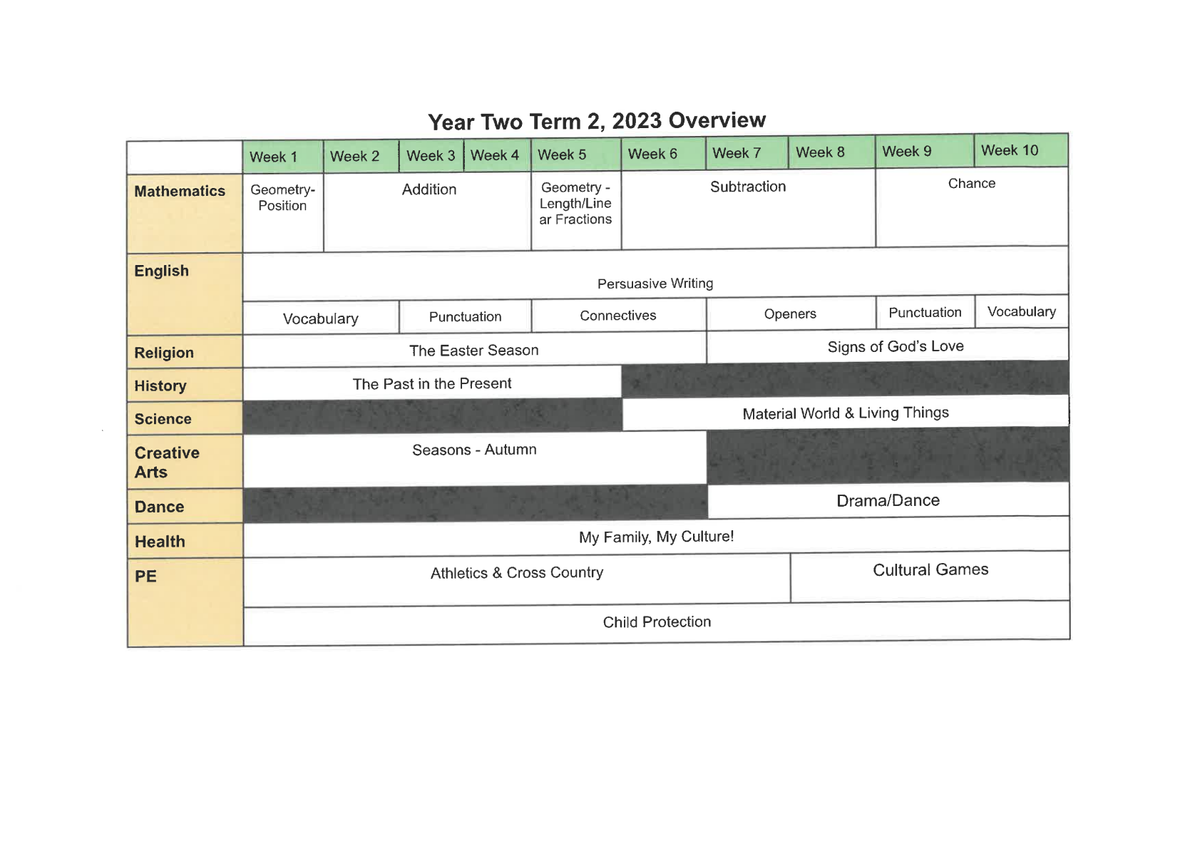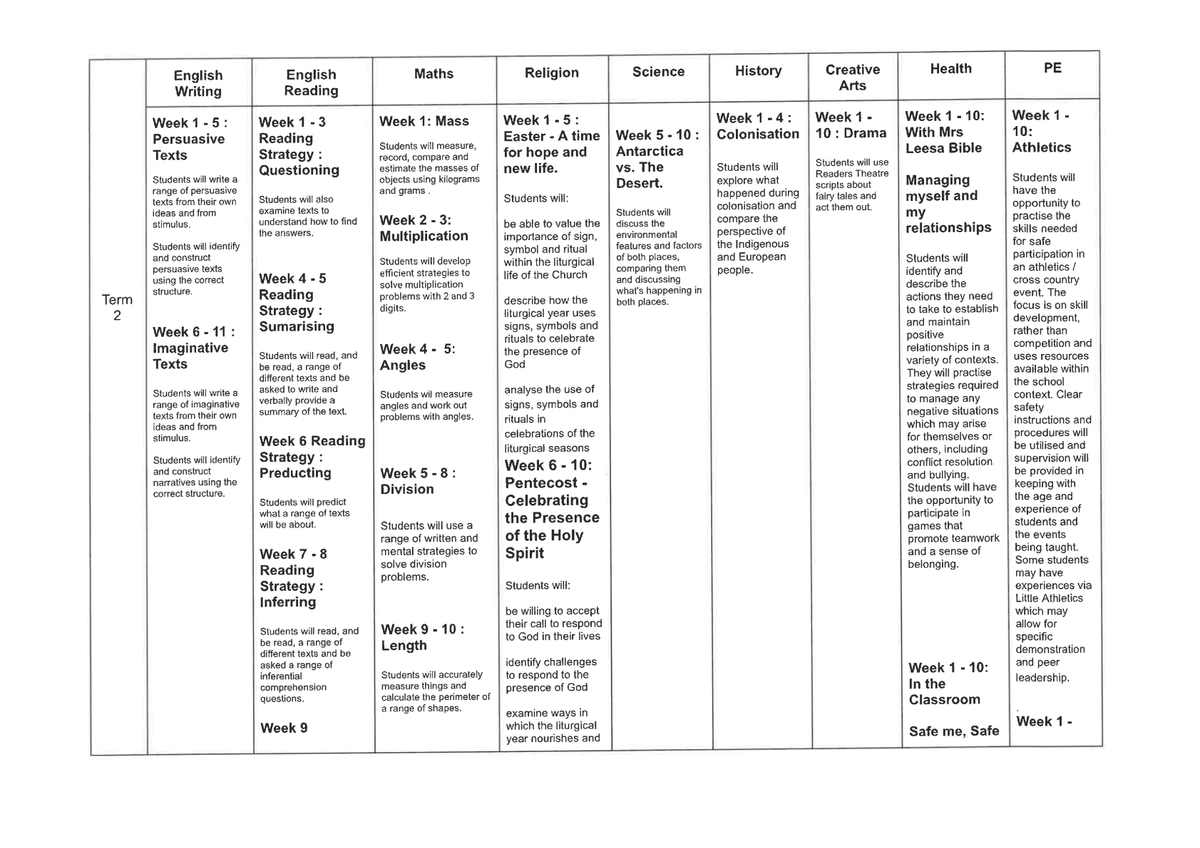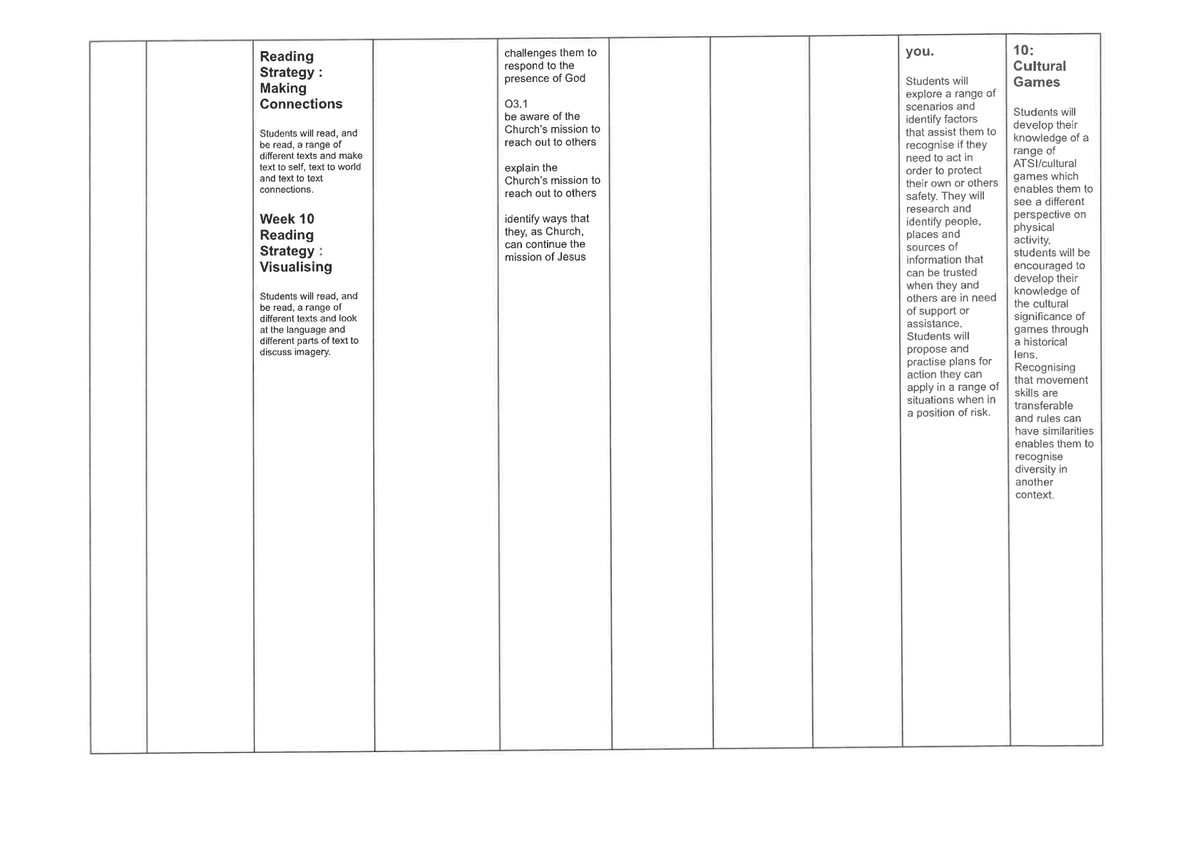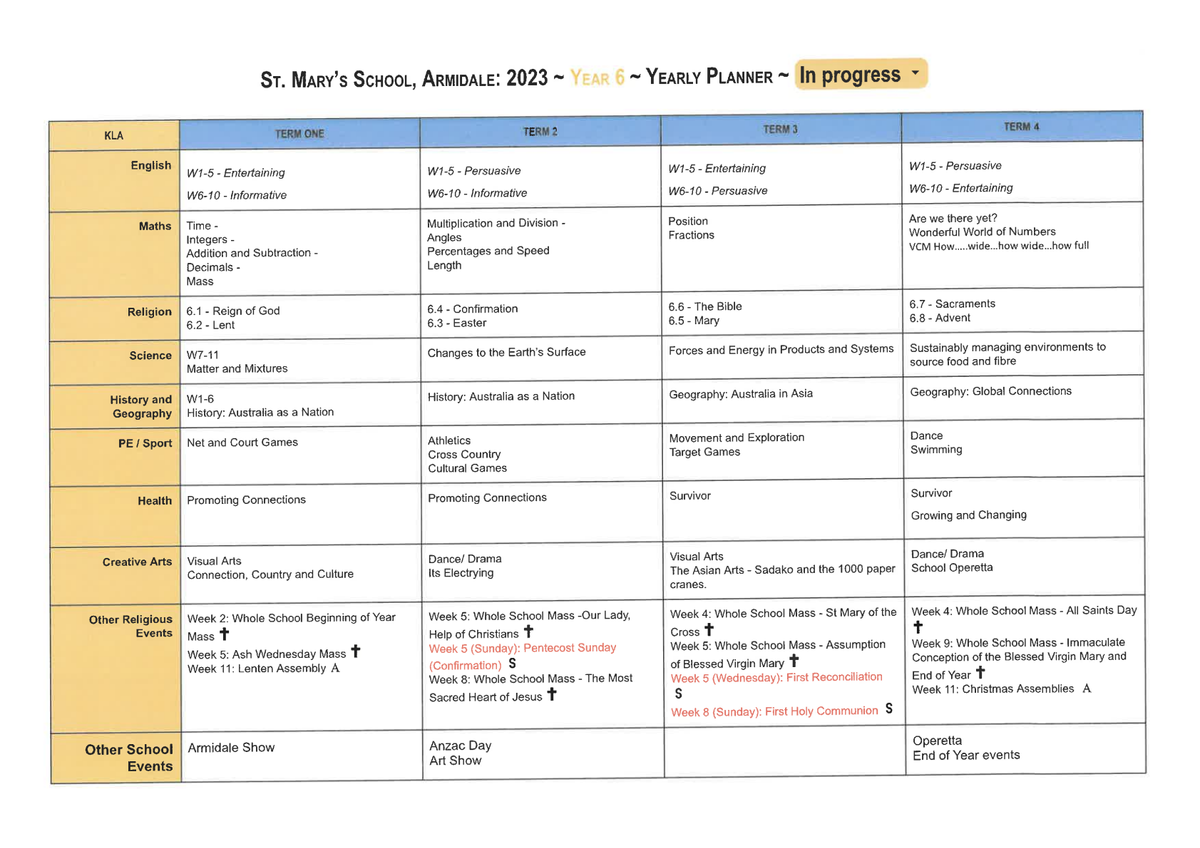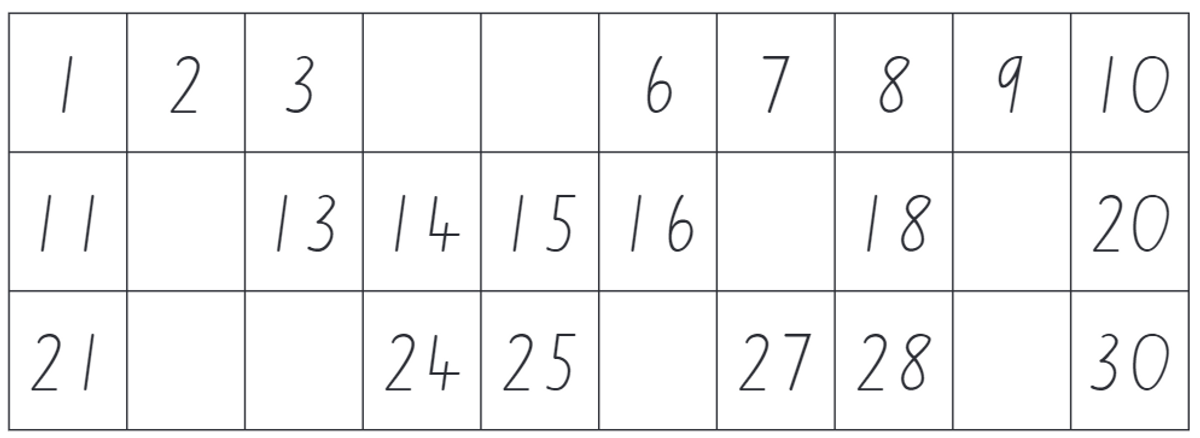K - Yr 6 Learning

Contacting Your Child's Teacher
Teachers welcome contact from parents, if you need to talk with staff please either contact the class teacher by phoning the school – 67724441 or email the school on smaadmin@arm.catholic.edu.au
Overview of Kindergarten Learning Term 2
English: InitiaLit - new sounds and tricky words
Mathematics: Position, Whole Number, Area, 3D Objects and Data
Religion: Jesus' death and Resurrection, Key items and people in the Church
Science: Earth and Space
Geography: Special Places
PD/H: Keeping Safe
CAPA: Dance
PE: Athletics
Overview of Year 1 Learning Term 2
Overview of Year 2 Learning Term 2
Overview of Year 3 Learning Term 2
English
The first part of this unit of work addresses the broad textual focus of informative writing. We will focus on specific informative text types of information reports, factual descriptions, explanations. We will have a specific content focus for students to write about, focusing on animals and endangered animals. The students will be exposed to a variety of informative texts before and during the unit. They will read and view factual texts such as non-fiction books, newspaper reports and documentaries, and will be provided with opportunities to read and respond to short informative texts.
The second part of this unit revisits narrative, focusing particularly on character development and the use of imagery and descriptive language devices to enhance imaginative writing pieces. The unit will also explore poetry as part of the whole school public speaking competition.
Mathematics
2D Space
In this unit students will manipulate, identify and sketch two-dimensional shapes, including special quadrilaterals, and describe their features.
Subtraction
Use and record a range of mental strategies subtraction of two-, three- and four-digit numbers, including Friends of 10, patterns, halving, jump strategy, split strategy, compensation strategy, written algorithm and Newman’s Analysis of word problems.
Angles
In this unit students will:
Identify angles as measures of turn and compare angle sizes in everyday situations.
Identify right angles in two-dimensional shapes and three-dimensional objects
Identify 'angles' with two arms in practical situations, eg the angle between the arms of a clock
Describe examples of right angles in the environment
Use the term 'right angle' to describe the angle formed when perpendicular lines meet
Compare angles directly by placing one angle on top of another and aligning one arm
Recognise that the length of the arms does not affect the size of the angle
Describe informally an angle as the 'amount of turning' between two arms
Identify 'perpendicular' lines in pictures, designs and the environment
Identify the 'arms' and 'vertex' of an angle
Use a Protractor
Multiplication
In this unit students will use mental and informal written strategies for multiplication and division.
PDHPE
Athletics Skills
Students will be introduced to the skills needed for participation in the events held at an athletics carnival. Skill development, rather than competition, will be the focus.
Taking Actions to Stay Safe
Students will recognise signs that may indicate they themselves or others are in an unsafe situation. They will rehearse and practice responses and protective strategies to promote safety in a range of situations.
Science
In this unit, students will learn that living things all have certain characteristics. They will use these characteristics to differentiate between living and non-living things. They will group plants and animals by their observable features. This unit involves the students working scientifically and using scientific thinking.
History
How and why do people choose to remember significant events of the past.
In this unit, students explore the historical features and diversity of their community as represented by symbols and emblems of significance and the different celebrations and commemorations held in Australia. They will investigate the origins of our state and national emblems and flags and also conduct an inquiry process on a significant Australian celebration or commemoration, for example, Anzac Day, Australia Day or Sorry Day.
Religion
Easter: A Time to Celebrate the Presence of the Risen Lord
In this unit students will learn to:
- be aware of the relevance of the Scriptures to the liturgical seasons
- explain major events in the life of Jesus which are recorded in the Scriptures and celebrated in the liturgical life of the Church
- interpret the significant events in the life of Jesus
- be aware of ways in which they can respond to the presence of Jesus in their lives
- describe ways people respond to the presence of Jesus
- create rituals which celebrate their response to the presence of Jesus
Pentecost: The Holy Spirit Gives us Strength
In this unit students will learn to:
- be aware of ways in which they can respond to the presence of Jesus in their lives
- describe ways people respond to the presence of Jesus
- create rituals which celebrate their response to the presence of Jesus
- be attentive to ways in which they can apply the message of Jesus in reaching out and relating to others
- identify the connection between the message of Jesus and their relationships
- apply the message of Jesus in making decisions in their relationships with others
Creative Arts
This unit has a strong focus on appreciating activities and also offers students a range of experiences in elements of drama. The unit provides opportunities for students interests, knowledge and understanding can be extended through the use of dramatic forms and the development of characters and emotions though Reader’s Theatre. In Dance students will investigate the expression of emotion through dance and music and look at Indigenous, folk and traditional dances of the world
Overview of Year 4 Learning Term 2
Tuesdays are Library borrowing days after Choir.
| Religion | Easter - A Time To Live The Good News.This unit begins with the experience of the disciples at the first Easter. It explores the presence of the risen Jesus in the parish community and in the Word of God. The unit focuses on the celebration of Easter and on the Liturgy of the Word. It locates Easter within the mission of the parish as it celebrates and responds to God’s Word. Pentecost - The Holy Spirit Gives Us Courage. This unit explores the courage needed to bear witness to the life, death and resurrection of Jesus. It is the Holy Spirit, alive and active in our lives, who gives us the courage to follow Jesus. The unit focuses on exploring examples of people (apostles, saints and heroes) who demonstrate courage in their lives. They model for us the courage to live as witnesses who speak the truth. |
| English | The text types for reading and writing this term are Information Texts weeks 1-6, and Australian Poetry weeks 7-10. A deep dive into the structure and features of these text types are done during guided reading and guided writing activities. Spelling activities such as LSCWC, dictionary definitions, writing compound and complex sentences including list words and a VCOP strategy are used each week. Handwriting and Grammar are modelled and taught explicitly throughout the week. Reading strategies such as Making Connections, Visualising, Inferring, Monitoring, Questioning, Summarising and Paraphrasing will be taught and used throughout the term. |
| Maths | 2D Shapes, Subtraction, Angles and Multiplication |
| HSIE | History - Great Journeys - Students investigate the reasons behind the great journeys of exploration. They learn about significant individuals of the Age of Exploration (circa 1400–1800) and closely examine the journey of one explorer, trader or navigator. They develop skills of historical inquiry; learning to pose research questions, locate and analyse information, communicate their findings to others, and reflect upon and evaluate what they have learned. By the end of the unit, students should be able to identify key reasons for the exploration of the era and understand some of its effects. Stories of the First Fleet - In this unit, students learn about the early years of European (British) settlement in Australia. They study the reasons behind the establishment of the Sydney colony, the First Fleet journey, and what life was like for the early colonists. The unit uses stories, drawings and other records from the era to teach a range of historical concepts, skills and knowledge, encouraging students to go behind the facts and consider what life was like for those who made that first game-changing journey. The focus here is on the colonists. In the next unit, this focus shifts to the Eora (Aboriginal people of Sydney). Contact - In this unit, students study the different forms of early contact between Aboriginal and Torres Strait Islander Peoples and early traders, explorers and settlers. Developing students’ skills in source analysis, understanding multiple perspectives and empathetic understanding are a focus. By the end of the unit, students should also understand the impact that the British colonisation of Sydney had on the lives of the Eora people and have some understanding of the varied and complex nature of the early relations between the Eora and the colonists.
|
| Science | Students use questioning and planning to conduct scientific investigations, collecting and summarising data that communicates using effective scientific representations. Students use to select and use materials, tools and equipment to develop solutions for a need or opportunity based learning activities. Students investigate regular changes caused by interactions between the Earth and the Sun. |
| PDH/PE | PE - Students will be introduced to the skills needed for participation in the events held at an athletics carnival. Skill development, rather than competition, should be the focus. Safety issues and procedures must be clearly outlined for students and all equipment should be age appropriate and in good order. Supervision will need to be provided considering the age, experience and capability of the students and the activities or events to be conducted. Students will understand and apply the skills needed for traditional ATSI/cultural games in a team environment. They will develop an understanding of the cultural significance of ATSI/cultural games and how they apply to the needs and interests of the individuals. Students will recognise that people participate in physical activity for many other reasons other than for improved fitness and health. PDH - Students will recognise how empathy and respect promotes inclusion by exploring cultural diversity including Aboriginal and Torres Strait Islander Peoples. They will identify the influence of peers, family and their community when forming their own ideas on significant issues such as appreciating and celebrating differences. |
| Visual Arts | Two individual artworks for the School Art Show which is early Term 2. One focus will be on Vincent Van Gogh - Starry Night and Jackie French’s Fire. Dance Performing: Student will learn to perform dances from a range of contexts, demonstrating movement skills, expressive qualities and an understanding of the elements of dance Composing: Student will explore, select and combines movement using the elements of dance to communicate ideas, feelings or moods Appreciating: Students will gives personal opinions about the use of elements and meaning in their own and others’ dances |
Overview of Year 5 Learning Term 2
Fridays are Library borrowing days after 2nd Lunch
Overview of Year 6 Learning Term 2
Armidale Diocesan Mathematics Initiative (MaST)
This term we continue our involvement in the Armidale Diocesan Mathematics Initiative known as the MaST Project Kindergarten to Year 2. I would like to commend our teachers for their hard work and diligence to ensure this initiative enhances the learning experiences for their students.
Maths At Home: Kindergarten - Whole Number
Kindergarten continue working on whole number this term. Counting is an important foundation for future number work. Students can count a group of objects or their toys. What numbers can you recognise, read and say?
Try the link below to assist with your child's counting.
1 to 30 and 30 to 1 | Jack Hartmann Count to 30 | Counting Song
Challenge 1: Count forwards from 1 to 30. Fill in the missing numbers as you count.
Which number comes before 6?
Which number comes after 11?
Point to the number 22 and count forwards to 30.
Point to the number 17 and count forwards to 30.
Which number is one less than 29?
Which number is one more than 23?
Stage 1 (Year 1 & 2) - Addition
After completing a unit of work on Position, Stage 1 are now working on Addition.
Promote and encourage mental strategies for adding numbers. Adding number facts to 20 is a great way to start. For example: 16 + 4
Other ways to assist your child at home are:
Using number bonds, or ‘friends of 10’, to assist with simple addition and subtraction problems. For example, 4 + 6 = 10, 6 + 4 = 10, 10 - 4 = 6, 10 - 6 = 4
How To Teach Number Bonds? | Maths – No Problem!
Using number bonds to solve addition problems by making groups of 10. For example, the problem of 26 + 8 can be solved by taking 4 from the 8 and adding it to the 26. The new problem of 30 + 4 is much easier to solve
Building number bond knowledge to understand ‘friends of 20’. These number pairs are 11 and 9, 12 and 8, 13 and 7, 14 and 6, 15 and 5.

